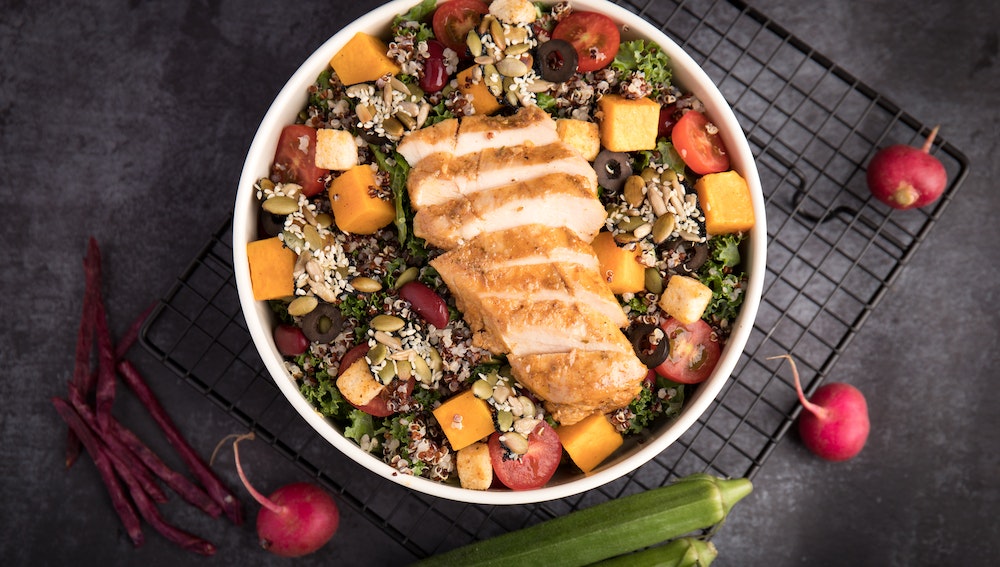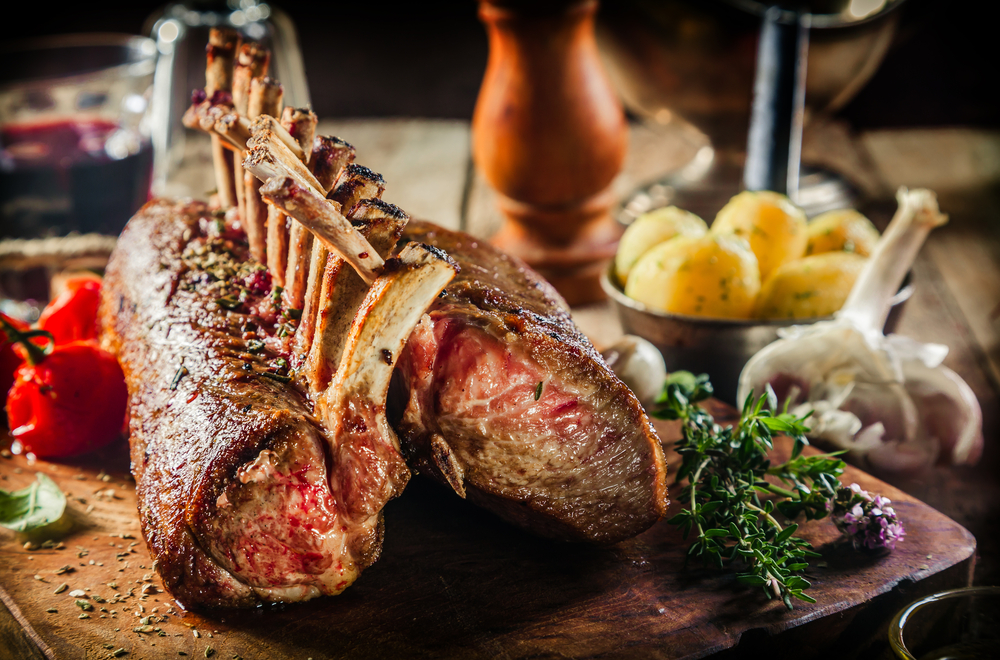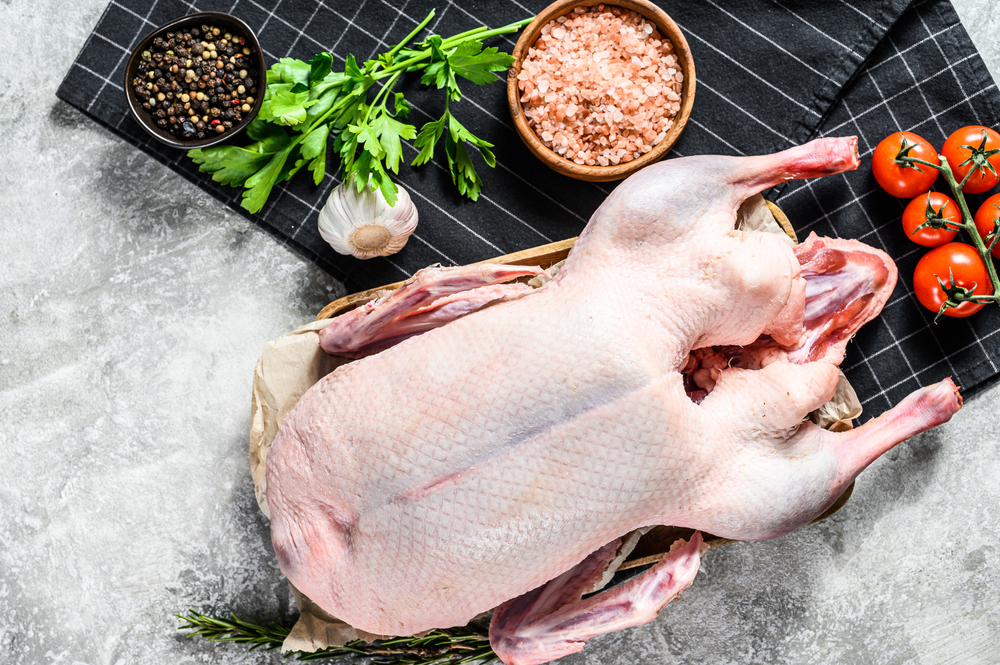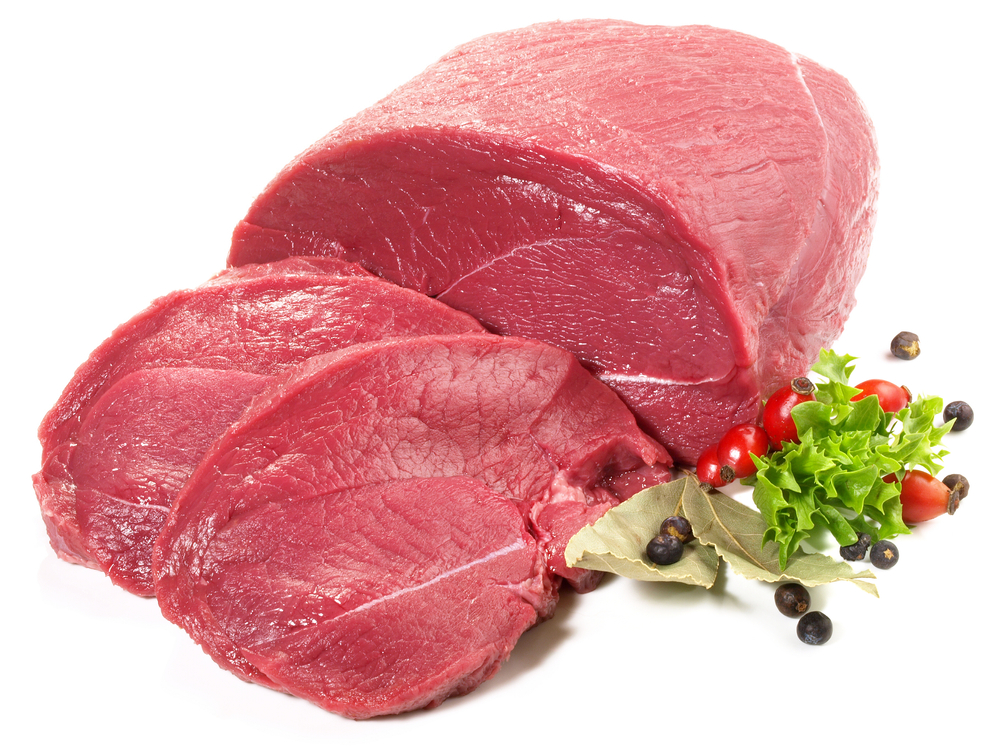Duck breast, often considered a luxurious and indulgent choice in the culinary world, is prized for its rich and distinct flavor. As a mainstay on fine dining menus and specialty restaurants, the unique taste of this poultry is often the subject of curiosity for food lovers.
But what exactly does duck breast taste like? In order to better understand the flavor profile of this sought-after meat, a closer look at its qualities and preparation is needed.
The taste of duck breast is often described as being more flavorful, juicier, and gamier compared to chicken, yet less gamey and more tender than other red meats like beef or lamb.
This can be attributed to the higher fat content found in duck meat compared to its poultry counterparts. In terms of texture and consistency, duck breast is known for its succulent and slightly chewy texture which has become part of its charm and attraction among culinary enthusiasts.
Key Takeaways
- Duck breast has a unique flavor profile, being more flavorful and juicier than chicken and less gamey than red meats.
- The texture of duck breast is succulent and slightly chewy, adding to its appeal.
- Cooking techniques and ingredient pairings play a significant role in determining the overall taste experience of duck breast.
Understanding Duck Breast

Duck breast is a popular protein choice in many culinary circles, known for its rich flavor and tender texture. As a type of poultry, duck breast shares some similarities with chicken and turkey, but has a distinct and unique taste profile that sets it apart from other common bird meats.
One of the main characteristics of duck breast is its higher fat content, which contributes to the succulent and juicy quality of the meat.
The fat layer is typically found just beneath the skin, which can easily be rendered and used for additional flavoring when cooked.
This fat content creates an appealing combination of taste and texture, as the fat renders out and the skin becomes crispy during cooking.
In terms of flavor, duck breast has a distinct, slightly gamey taste that is unlike that of chicken or turkey. It can be described as having a rich, earthy, and somewhat sweet flavor profile.
This distinctive taste is what makes duck breast particularly prized in various culinary traditions, as it provides a unique and delicious twist on traditional poultry dishes.
Nutritionally speaking, duck breast is a good source of protein, and contains essential vitamins and minerals such as iron, zinc, and B vitamins.
While the fat content may be higher than that of some other leaner proteins, the majority of this fat is comprised of healthier monounsaturated fats that can provide benefits for heart health and overall well-being.
In conclusion, duck breast is an enticing protein option for those looking to diversify their palate and explore new flavors.
Not only does it offer a unique flavor and texture distinct from other poultry options, but it also provides valuable nutrients and healthy fats.
Tasting Notes Explained
Duck breast is known for its unique and rich flavor, which sets it apart from other poultry options. The taste profile of duck breast can be characterized by its distinct savoriness and natural sweetness.
Its succulent meat offers a tender and juicy texture when cooked properly. Many people describe duck breast as having a gamey taste when compared to chicken or turkey.
The gamey taste is mainly attributed to the diet and lifestyle of ducks. Ducks are omnivorous animals and their diet consists of a variety of insects, small fish, and plants.
This varied diet contributes to the complexity and depth of flavor found in duck breast. Moreover, ducks are highly active birds, which leads to more developed muscle fibers. This results in a firmer and denser texture, enhancing the overall eating experience of duck breast.
The flavor of duck breast can be further influenced by various cooking techniques and the use of marinades or seasonings. For example, pan-searing or grilling the duck breast with the skin on can lead to a crispy and flavorful exterior, while the interior remains tender and moist.
Pairing duck with fruit-based sauces, such as cherry or orange, is also a popular way to balance the rich taste of the meat with a touch of sweetness and acidity.
In summary, duck breast offers a flavorful and gamey taste that sets it apart from other poultry options. Its complex taste profile, primarily influenced by the ducks’ diet and lifestyle, makes it a favorite among culinary enthusiasts.
The meat’s tender texture coupled with a variety of cooking techniques and pairings only adds to its appeal.
Texture and Consistency

Duck breast is known for its unique combination of textures and consistency. The meat itself has a tender texture, which is often compared to a fine cut of beef or a slightly more delicate chicken.
The tenderness is attributed to the fact that ducks do not have much intramuscular fat and their muscles develop a soft, pleasing texture when cooked properly. This tenderness makes duck breast enjoyable to eat and allows the flavors to shine through.
On the other hand, the skin of the duck breast provides a contrasting texture. When cooked correctly, the skin becomes crispy, almost akin to the crispiness of bacon.
The crispy skin is one of the elements that makes duck breast so popular among food lovers. It provides an interesting and satisfying combination of textures when paired with the tender meat below.
The secret to achieving this perfectly crispy skin lies in proper cooking techniques.
In conclusion, the main allure of duck breast lies in its dual nature: the tender, flavorful meat and the crispy, delicious skin.
This intriguing and harmonious blend of textures appeals to many palates, making duck breast a widely appreciated ingredient in culinary circles.
Comparison with Other Meats

Duck Vs Chicken
Duck meat, particularly duck breast, is typically darker and richer in flavor compared to chicken. Chicken is considered white meat, while duck falls into the category of dark meat poultry.
Duck meat has a higher fat content than chicken, making it more tender, moist, and aromatic. In contrast, chicken has a milder taste and leaner texture.
Duck Vs Turkey
Duck and turkey both fall into the category of poultry meats, but they have distinctive differences in taste and texture. Duck meat is darker, richer, and fattier compared to turkey, which has both white and dark meat.
The dark meat in turkey is still leaner and milder in flavor compared to duck. Both meats can benefit from being cooked slowly to retain moisture and tenderness.
Duck Vs Beef
Duck meat is considered a type of poultry, while beef is a red meat. The taste of duck is richer and more complex than the relatively milder flavor of beef.
Duck meat is darker and has a higher fat content than beef, which contributes to its unique taste and moist texture. Beef, on the other hand, has a denser texture and can be cooked in a variety of ways, from rare to well-done.
Duck Vs Lamb
Duck and lamb are quite different in terms of taste, texture, and cooking methods. Duck is a dark meat poultry with a rich, aromatic flavor and a tender, moist texture. Lamb, a red meat, is known for its distinct, earthy taste and firmer texture. Both meats have a good amount of fat, which contributes to their flavors.
However, the fat content in duck is typically higher than in lamb. Cooking methods for these meats differ, with duck benefiting from slower cooking to preserve moisture, while lamb can be cooked quickly or slowly depending on the cut and desired tenderness.
Cooking Techniques and Influence on Taste

Roasting Duck
Roasting is a popular method for cooking duck breast, as it allows the meat to maintain its natural juices and develop a crispy skin. To prepare a roasted duck breast, first pat the skin dry and score it in a crosshatch pattern. Season with salt and pepper.
Place the breast, skin-side down, in a cold oven-safe skillet and heat over medium heat. Cook until the skin is golden brown and crispy, then flip and continue cooking until the desired level of doneness is reached.
Benefits: Roasting duck breast creates a succulent and tender texture, with a crispy, flavorful skin.
Grilling Duck
Grilling duck breast is an excellent way to infuse the meat with a smoky flavor and charred outer crust. Before grilling, marinate the duck breast in a blend of herbs and spices to enhance the taste further. When ready to cook, preheat the grill to medium-high heat.
Cook the breast, skin-side down, until well browned and slightly crispy. Flip and continue grilling until the desired internal temperature is reached.
Benefits: Grilling duck breast imparts a smoky, charred taste and a rich, caramelized crust while keeping the meat juicy.
Slow Cooking Duck
Slow cooking duck breast is ideal for those looking to create a more tender and succulent dish. This method involves cooking the breast at a low temperature over an extended period.
To start, season the duck breast with your preferred spices and sear both sides in a hot skillet. Then, transfer to a slow cooker, and cook on low heat for 4 to 6 hours until the meat is fork-tender.
Benefits: Slow cooking breaks down the meat’s fibers, resulting in a tender and flavorful duck breast.
Each cooking technique impacts the overall taste and texture of duck breast. Roasting and grilling enhance the natural flavors, add crispiness to the skin, and develop a rich outer crust.
Slow cooking, on the other hand, yields a more tender and juicy meat. Experiment with these techniques to find the perfect method for your duck breast dish.
Common Ingredients and Pairings

Duck breast has a distinct, rich flavor that can be complemented by various ingredients and pairings. In this section, we will discuss some popular choices when it comes to enhancing the taste of duck breast.
Vegetables play an important role in balancing the flavors of duck breast. Root vegetables such as carrots and parsnips are excellent choices, as they possess a natural sweetness that complements the richness of the meat.
Leafy greens like kale and Swiss chard provide a fresh, slightly bitter note, which helps to cut through the fatty taste of duck.
When it comes to spices, there are several that pair well with duck breast. Garlic and shallots not only add depth of flavor but also enhance the aroma of the dish. Pepper provides a subtle heat to balance the taste, while thyme offers a hint of earthiness.
Mixing these ingredients with olive oil and rubbing them onto the duck breast before cooking helps to develop a beautiful crust and elevate the flavor profile.
Sauces can make or break a duck dish, so choosing the right sauce is vital. Classic sauce options for duck breast include orange and cherry, which bring out the fruity element and cut through the rich, fatty taste. Additionally, a red wine reduction or a balsamic glaze can offer a complex, tangy contrast to the duck’s natural flavors.
Finally, incorporating fruit into duck breast dishes can provide a burst of freshness and acidity that works well with the meat’s depth. Citrus fruits, such as orange or grapefruit, can be used in sauces or zested directly onto the duck breast.
Similar acidity can be achieved with berries, like blackberries or raspberries, which can either be served alongside the duck or included in a sauce.
In conclusion, there are numerous ways to pair and enhance the taste of duck breast to achieve a balanced and flavorful dish. Paying attention to your choice of vegetables, spices, sauces, and fruits can create a successful culinary experience.
Nutritional Aspects
Duck breast is a source of various nutrients that contribute to a healthy diet. Among these nutrients are vitamins, minerals, and essential fatty acids. In terms of vitamins, duck breast contains noteworthy amounts of vitamins B3 (niacin) and B6. These vitamins play a crucial role in energy production and support healthy brain function.
Minerals are also found in duck breast, with selenium and zinc being particularly prominent. Selenium provides antioxidative properties, while zinc is integral for immune system function and cellular metabolism.
The presence of these minerals in duck breast can contribute to overall health and wellbeing.
One of the critical components of duck meat is its fatty acid profile. Duck breast is a good source of omega-3 fatty acids, which have been linked to numerous health benefits, including reduced inflammation, improved cardiovascular health, and enhanced cognitive function.
While the fat content might be higher compared to other lean meats, the balance of fatty acids is beneficial.
In terms of calories, duck breast is classified as a moderately calorific protein source. A 3.5-ounce (100-gram) serving of cooked duck breast contains approximately 200-230 calories, depending on preparation methods.
Although the calorie count is slightly higher than other lean meats, such as chicken or turkey, the wealth of nutrients in duck breast can make it a valuable addition to a balanced diet.
In summary, duck breast is a nutritionally dense protein option, offering essential vitamins, minerals and fatty acids. Incorporating duck breast into one’s meal plans can provide health benefits and contribute to a well-rounded diet.
Types of Duck Breasts

Moulard Duck
The Moulard Duck is a hybrid species, a cross between the Muscovy duck and the Pekin duck. Its breast meat is succulent and flavorful, with a rich and buttery texture.
The Moulard duck is known for its larger size in comparison to other breeds, which yields more meat per bird. The breast meat is generally deeper in color, indicative of its robust taste.
Muscovy Duck
The Muscovy Duck is a tropical bird native to Central and South America. It is appreciated for its tender and lean meat, which has a distinct taste that sets it apart from other duck varieties.
The breast meat of a Muscovy duck is exceptionally tender and juicy, with a mild and sophisticated flavor profile. It is a popular choice among culinary enthusiasts looking for a versatile and delicate taste experience.
Challandais
The Challandais duck, also known as the Challans duck, is a rare breed from the Vendée region in France. It is highly sought after by gourmet chefs for its exceptional taste and quality.
The Challandais duck is smaller than the Moulard and has a unique flavor profile. The breast meat is tender, delicate, and succulent, with a slightly sweet taste. It is considered a luxury item in the culinary world and often reserved for special occasions or upscale dining establishments.
Difference Between Farmed and Wild Duck
Farmed ducks and wild ducks present several differences in terms of taste and culinary aspects. Their living environments, feeding habits, and types of exercise contribute significantly to these distinctions in taste profiles.
Farmed duck typically has a rich and somewhat tender texture. This is primarily due to the controlled diet and environment provided for farmed ducks, which ensures a consistent and predictable flavor.
Their diet consists of specific feed that often contains grains and proteins, leading to a milder, less gamey flavor.
On the other hand, wild duck exhibits a deeper and more robust taste, attributed to their diverse diet and natural habitat. Wild ducks eat various food sources, including plants, seeds, insects, and small fish, which contribute to a stronger and gamey taste in the meat.
The muscles of wild ducks are more developed due to their increased physical activity, resulting in darker and leaner meat, with a more distinct flavor.
Here are some key differences between farmed and wild duck:
- Flavor: Farmed duck has a milder, less gamey taste, while wild duck offers a stronger, more gamey flavor.
- Texture: Farmed duck is more tender and juicy, compared to the leaner and firmer texture of wild duck.
- Color: The meat of farmed duck is usually lighter in color, while wild duck meat is darker, owing to the difference in muscle development.
- Fat content: Farmed ducks tend to have a higher fat content due to less physical activity, whereas wild ducks have a lower fat content, leading to leaner meat.
In terms of cooking and preparation, farmed duck might require less seasoning, as its natural flavors are more subtle.
Wild duck, with its robust taste, can be paired with stronger flavors and often benefits from slow cooking methods, which help to tenderize the meat and break down any potential toughness.
In summary, when comparing farmed and wild duck, the choice comes down to personal preferences for flavor, texture, and culinary versatility.
Global Consumption of Duck
Duck is a popular choice of meat around the world, with varying cultural culinary preferences. In China, duck is widely consumed for its unique flavor and is a key ingredient in many traditional dishes.
Peking duck, for example, is a famous dish that has been served for centuries, featuring a perfectly roasted duck with crispy skin.
Chinese duck consumption accounts for a large portion of global demand, where it is often enjoyed in soups, stir-fries, and roasted dishes.
In the United Kingdom, duck is less commonly found on the menu but is still appreciated by many. While not as popular as chicken or turkey, duck is often associated with special occasions or fine dining establishments.
The British palate typically prefers dishes such as duck a l’orange, roast duck with a tangy citrus sauce, or duck confit, a slow-cooked preparation of the meat. Duck is also sought after as a healthier alternative to red meat, due to its lean composition and high protein content.
India, on the other hand, has a lower consumption rate of duck compared to China and the UK. This can be attributed to the country’s predominantly vegetarian population and religious restrictions on certain types of meat.
However, in certain regions, such as northeastern India and the coastal areas of Kerala, duck is enjoyed as a local delicacy. Indian duck dishes utilize rich, aromatic spices, and often incorporate tangy and sour flavors.
Despite the variation between cuisines, duck meat remains an appreciated global protein source, with widespread consumption across many countries.
The above-mentioned countries demonstrate the differences in duck preparation methods and dish styles, while also highlighting the substantial role of duck in worldwide food culture.
Conclusion
Duck breast, a widely appreciated and versatile protein source, offers a distinctive taste that sets it apart from other poultry. Its rich, tender texture and flavorful taste can be attributed to the higher fat content present in the meat.
When cooked properly, duck breast can achieve a slightly crispy outer layer while maintaining its succulent interior. Depending on how it is prepared, the taste of duck breast can range from mildly gamey to more robust in flavor.
In conclusion, duck breast offers a unique culinary experience that is worth trying for those seeking to expand their palate. Its versatility in the kitchen allows for a variety of preparations and pairings, making it a valuable addition to any meal.
Frequently Asked Questions
How does duck breast compare to other meats?
Duck breast is a flavorful, dark meat that falls in between poultry and red meat in taste and texture. Compared to beef or pork, duck breast is leaner, while still maintaining a richer flavor than chicken or turkey. Duck breast also tends to be slightly fattier due to the layer of fat beneath its skin.
What is the flavor profile of duck breast?
Duck breast has a robust and distinctive taste with a slightly gamy flavor. Its dark meat carries a rich, earthy, and umami character, often enhanced when cooked with complementing herbs, spices, or fruit-based sauces.
Is duck breast a tender meat?
When cooked properly, duck breast can be quite tender. The key is to render the fat layer and sear the skin to achieve a crispy exterior while keeping the inside moist and juicy. Overcooking duck breast can result in a tough, chewy texture, so it is essential to cook it to a proper internal temperature of about 135°F (57°C) for medium-rare.
How does duck breast taste compared to poultry?
Duck breast has a more distinct and intense flavor than most poultry, like chicken or turkey. Due to its fat content and darker meat, duck breast possesses a rich, savory taste that is sometimes described as gamy or earthy, setting it apart from traditional poultry dishes.
What makes duck breast taste unique?
Duck breast’s unique taste stems from its fat content and dark meat. The layer of fat under the skin adds richness to the flavor, while the dark meat contributes to its earthiness and umami element.
Additionally, ducks have a diverse diet, which contributes to the unique taste associated with their meat.
Are there any common taste comparisons for duck breast?
Some people compare the taste of duck breast to that of dark meat from chicken or turkey, while others liken it to certain cuts of red meat, like beef or venison.
Unlike chicken or turkey, duck breast boasts a richer flavor, often enhanced with herbs and spices that bring out its natural, complex notes.







